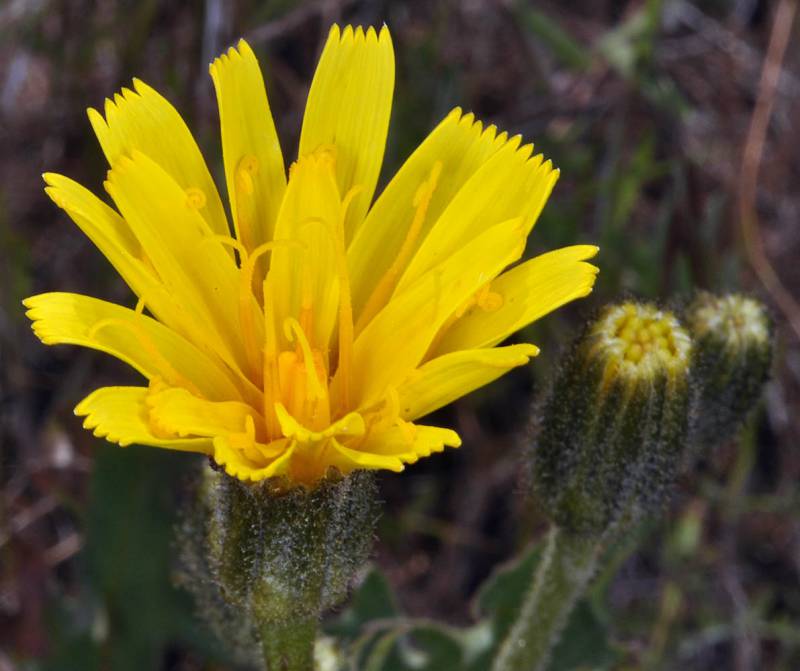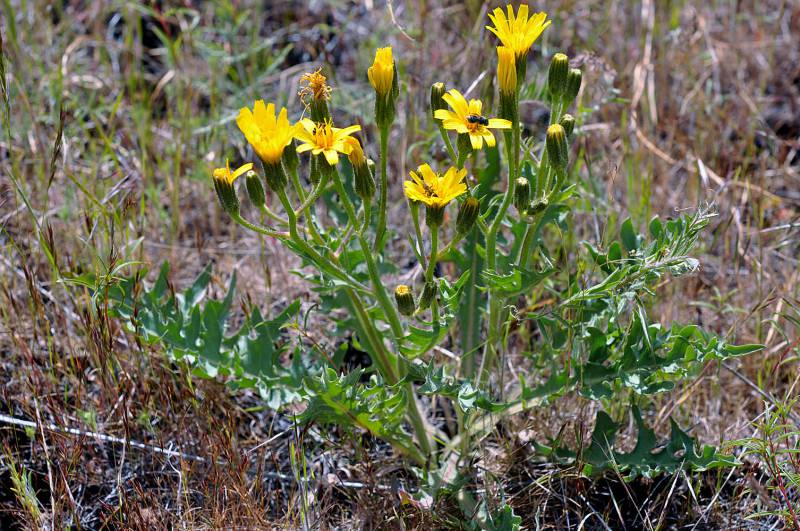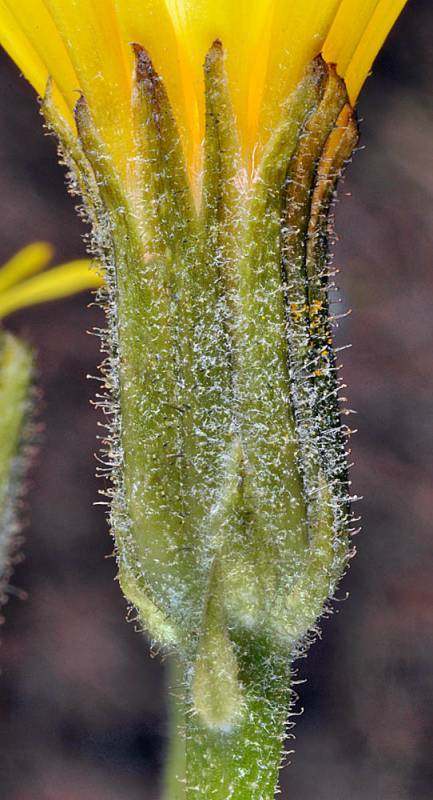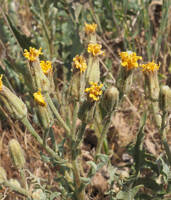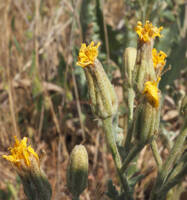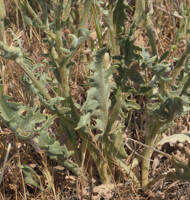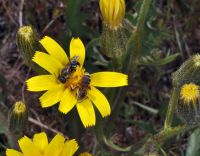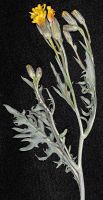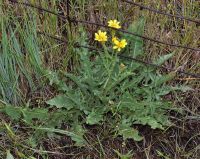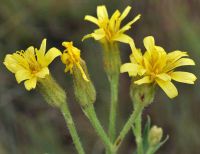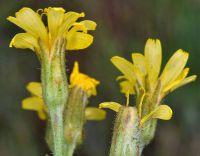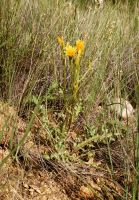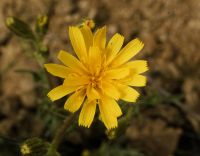Distribution: Occurring east of the Cascades crest in central Washington; central Washington to California.
Habitat: Dry slopes, sagebrush, and forest openings from the foothills to middle elevations in the mountains.
Flowers: May-July
Origin: Native
Growth Duration: Perennial
Conservation Status: Endangered in Washington (WANHP)
Pollination: Bees, butterflies, flies, beetles, apomixis?
Perennial with 1-3 stout stems from a tap-root, 1-3 dm. tall, with milky juice.
Leaves covered with short, often glandular hairs; basal and lower cauline leaves 1-2 dm. long, pinnatifid with dentate segments, the mid-rib strongly reddish; upper leaves few and reduced.
Heads 2-22, on stout peduncles which are expanded toward the apex, 11-40 flowered; involucre 14-21 mm. high, lightly white-woolly and strongly glandular on short, stiff, pointed hairs; longer inner bracts 8-14; corollas ligulate, yellow, about 2 cm. long.
Achenes brown or yellowish, narrowed above.
Publication: Erythea. 3: 73. 1895.
Crepis bakeri Greene ssp. cusickii (Eastw.) Babc. & Stebbins [FNA19]
Crepis bakeri Greene ssp. idahoensis Babc. & Stebbins [FNA19, HC]
PNW Herbaria: Specimen records of Crepis bakeri in the Consortium of Pacific Northwest Herbaria database
WA Flora Checklist: Crepis bakeri checklist entry
OregonFlora: Crepis bakeri information
E-Flora BC: Crepis bakeri atlas page
CalPhotos: Crepis bakeri photos

